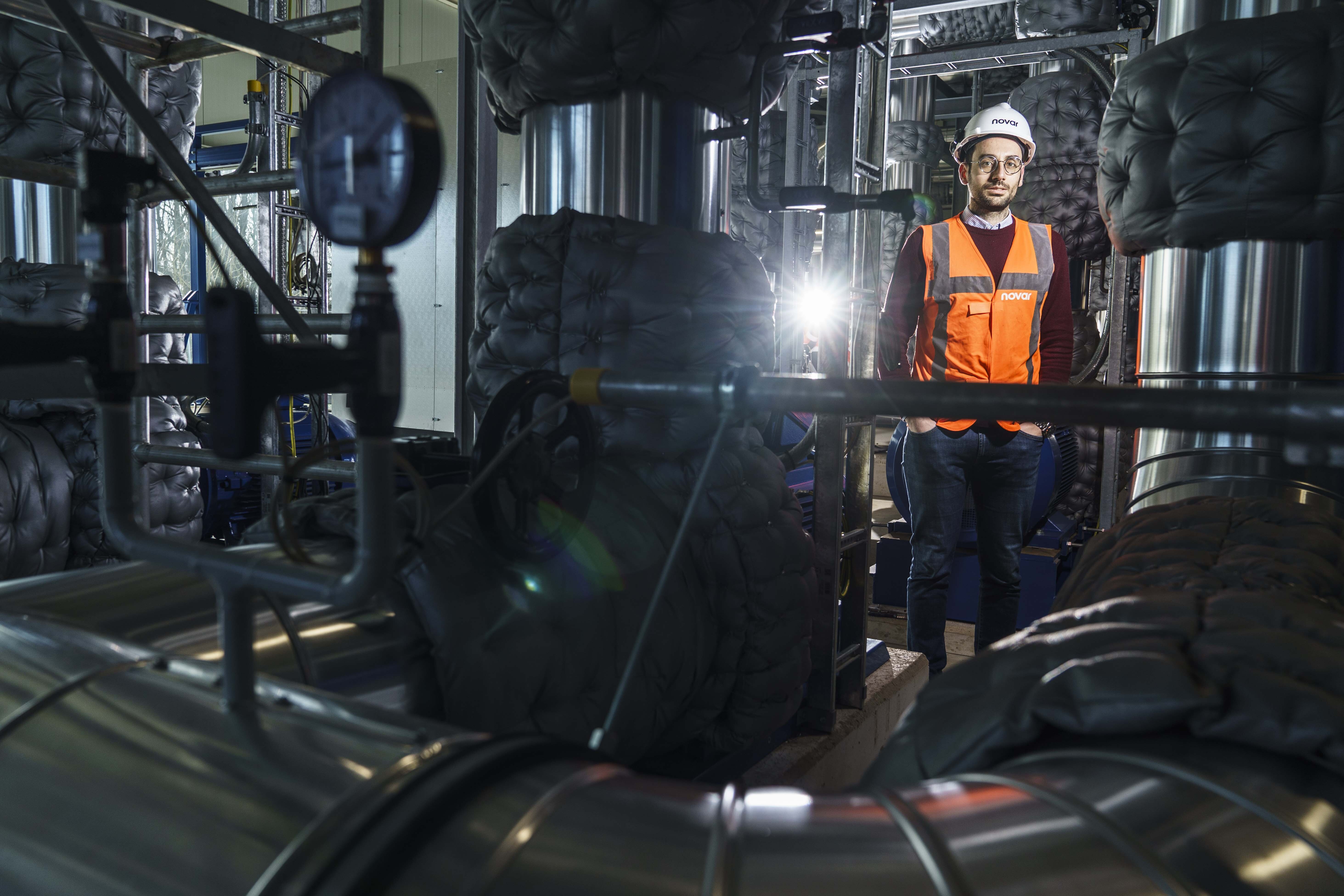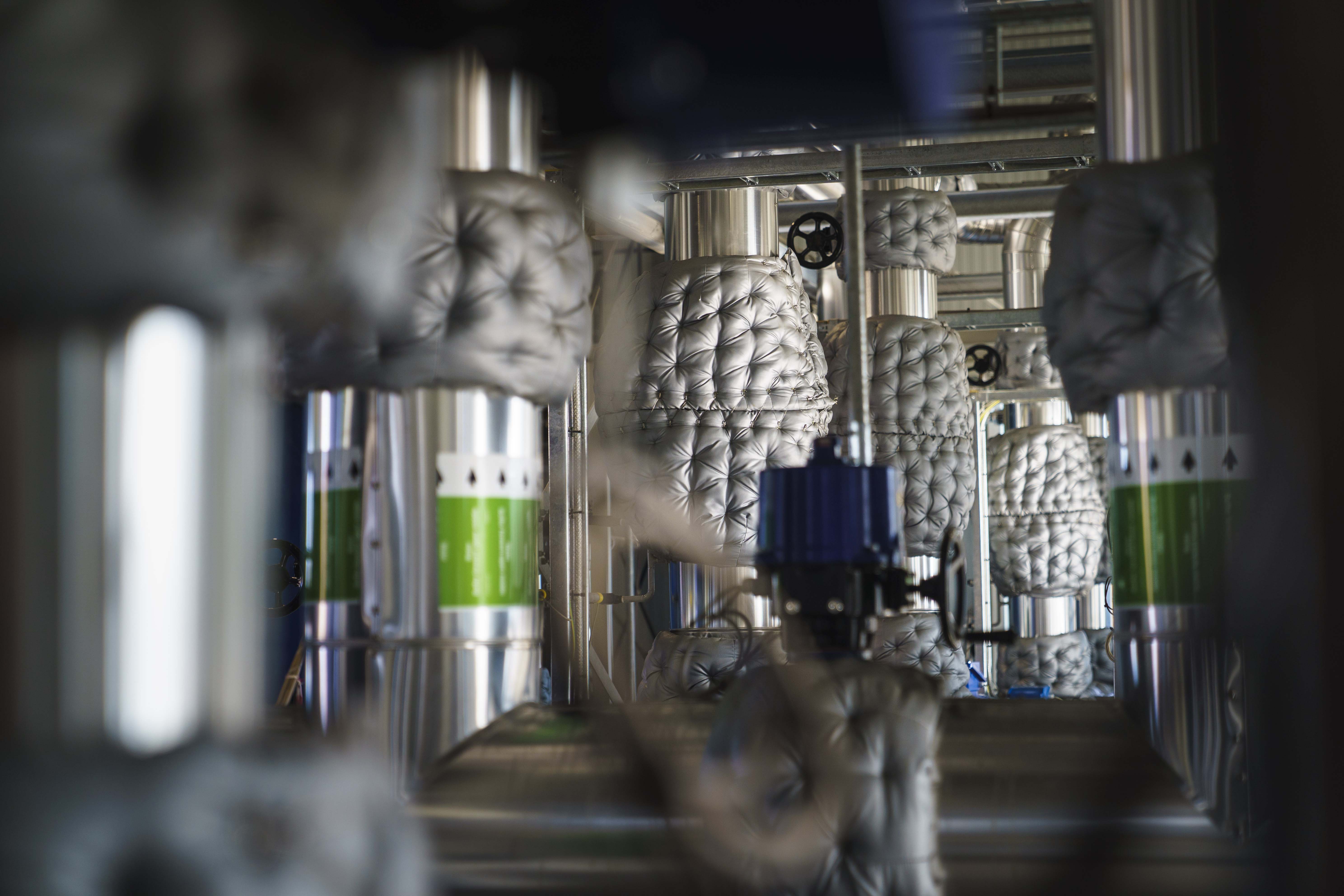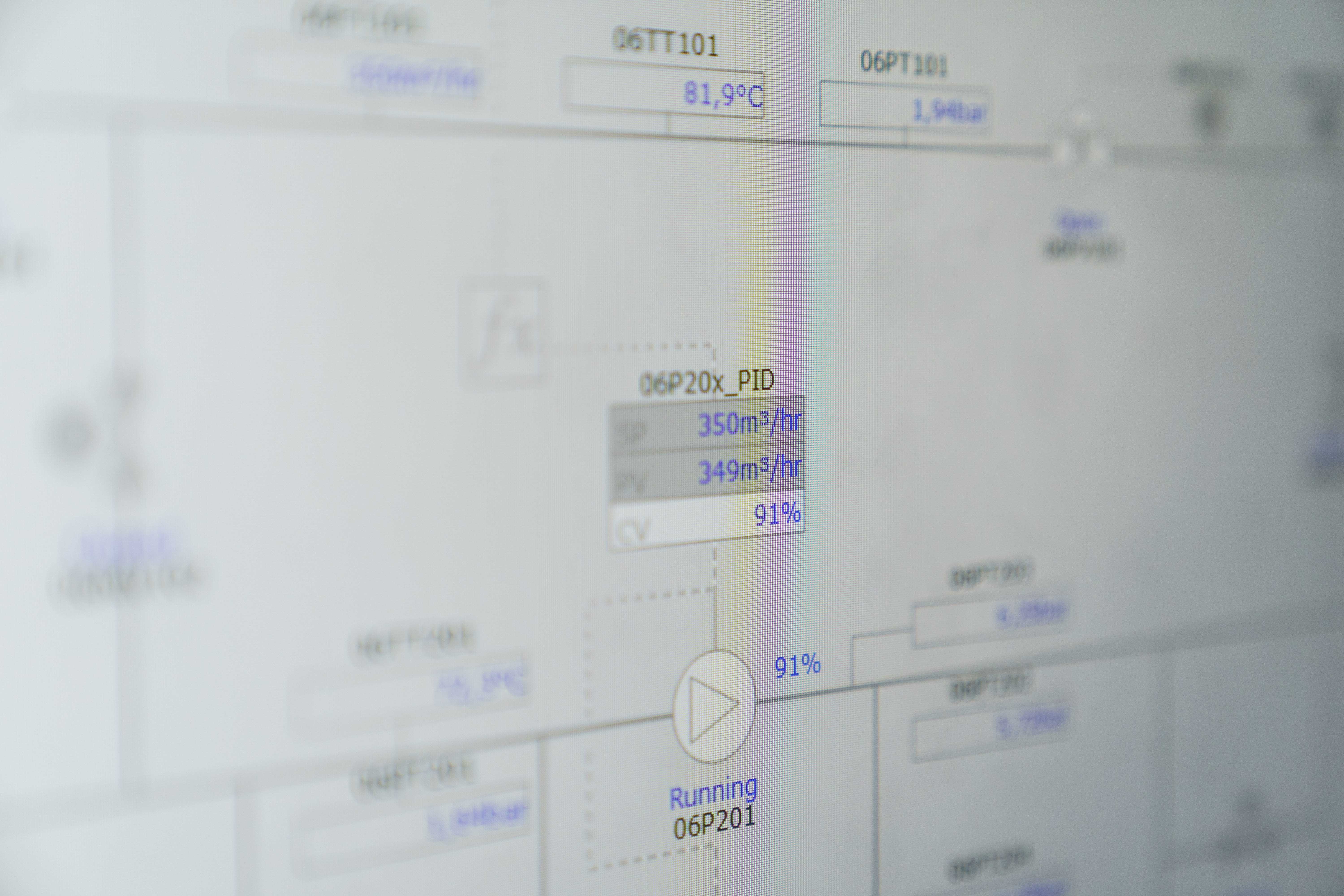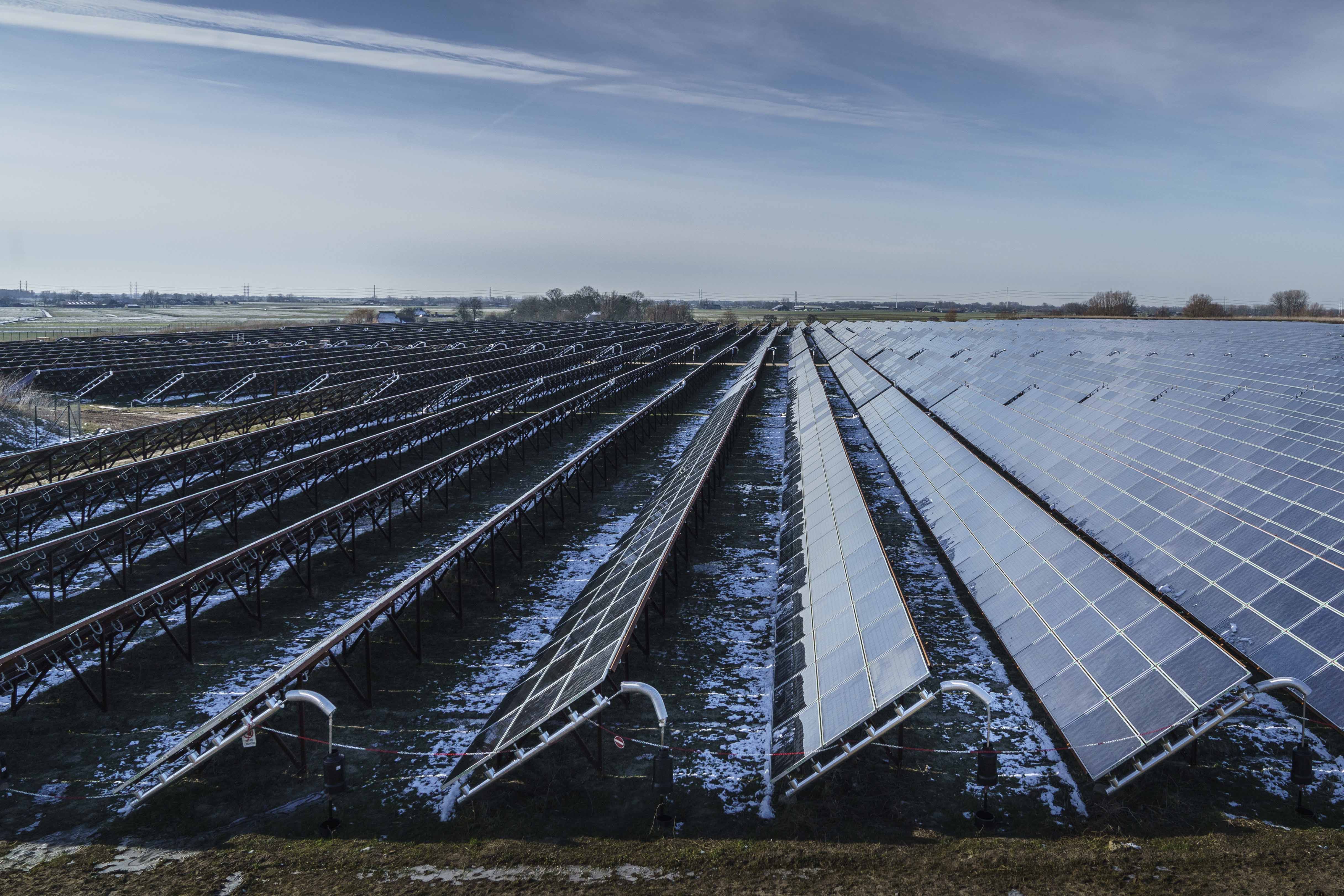Smart energy management
Grid congestion poses a challenge to our electricity network, and expanding the infrastructure will take time and money. ‘What we can do right now, is manage and optimize what we have as best as we can,’ says Michele Cucuzzella. For example by using peaks in electricity generation to heat and store water which can then be used to heat houses in the city at a later stage.





The picture above shows Cucuzzella in a building of Novar, which develops and owns large-scale green energy systems. Pipes carrying hot water enter this building to transfer their heat to the WarmteStad local district heating network. This is a network of pipelines that is used by some 2,600 households in the city of Groningen to heat their houses— and will soon also be used by several University buildings.
Novar’s water is heated using solar collectors: black panels that absorb the sun’s heat which heats the water that flows through the pipes at the back of these panels. In addition, WarmteStad uses excess heat from data centres and operates its own heat pumps. All these heat sources must be carefully managed and optimized to ensure that households never experience a shortage of heat. Cucuzzella’s research focuses on modeling and designing algorithms to manage and optimize this complex process.
Back in Italy, Cucuzzella also collaborated with a local district heating network, where he improved efficiency by using the storage tanks more effectively. In Groningen the control engineer envisions something similar: ‘On a sunny day in summer, you could use the excess electricity from the network to heat water and store it in these well insulated tanks to use in winter.’
But Cucuzzella’s models go even further: he collaborates with environmental psychologists to incorporate the human factor. Can we be nudged to make small changes to the way we use electricity? Cucuzzella: ‘I don’t mean that you won’t be allowed to use your dishwasher anymore, but rather that you’d use it at a different time. After all, we have to share what is available.’
Text: FSE Science Newsroom | Charlotte Vlek
Photos: Reyer Boxem
Every two weeks, UG Makers puts the spotlight on a researcher who has created something tangible, ranging from homemade measuring equipment for academic research to small or larger products that can change our daily lives. That is how UG researchers contribute to the solutions for big scientific and societal challenges.
For decades, engineering teaching and research at the UG has been part of a wide array of strong disciplines, and from a national point of view, our collaboration with the four technical universities is becoming more and more intensive.
Previous portraits of Makers can be found on the overview page.
More information
| Last modified: | 02 April 2025 10.25 a.m. |
More news
-
24 March 2025
UG 28th in World's Most International Universities 2025 rankings
The University of Groningen has been ranked 28th in the World's Most International Universities 2025 by Times Higher Education. With this, the UG leaves behind institutions such as MIT and Harvard. The 28th place marks an increase of five places: in...
-
05 March 2025
Women in Science
The UG celebrates International Women’s Day with a special photo series: Women in Science.
-
16 December 2024
Jouke de Vries: ‘The University will have to be flexible’
2024 was a festive year for the University of Groningen. In this podcast, Jouke de Vries, the chair of the Executive Board, looks back.
